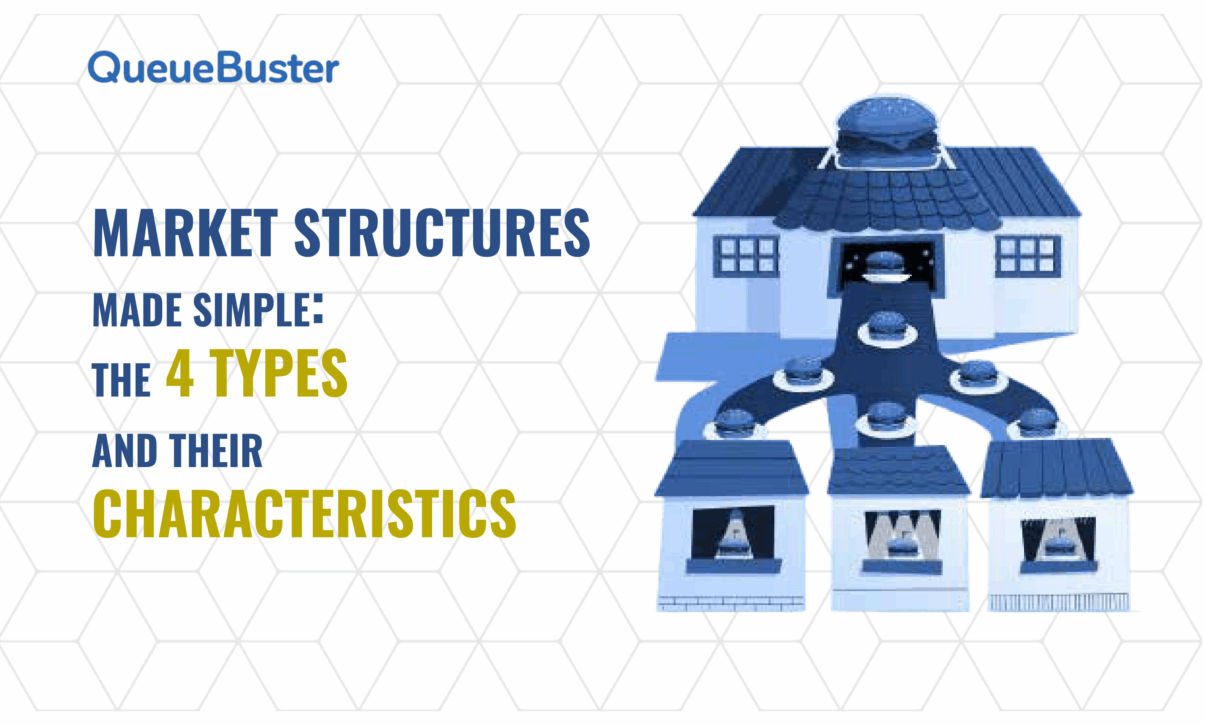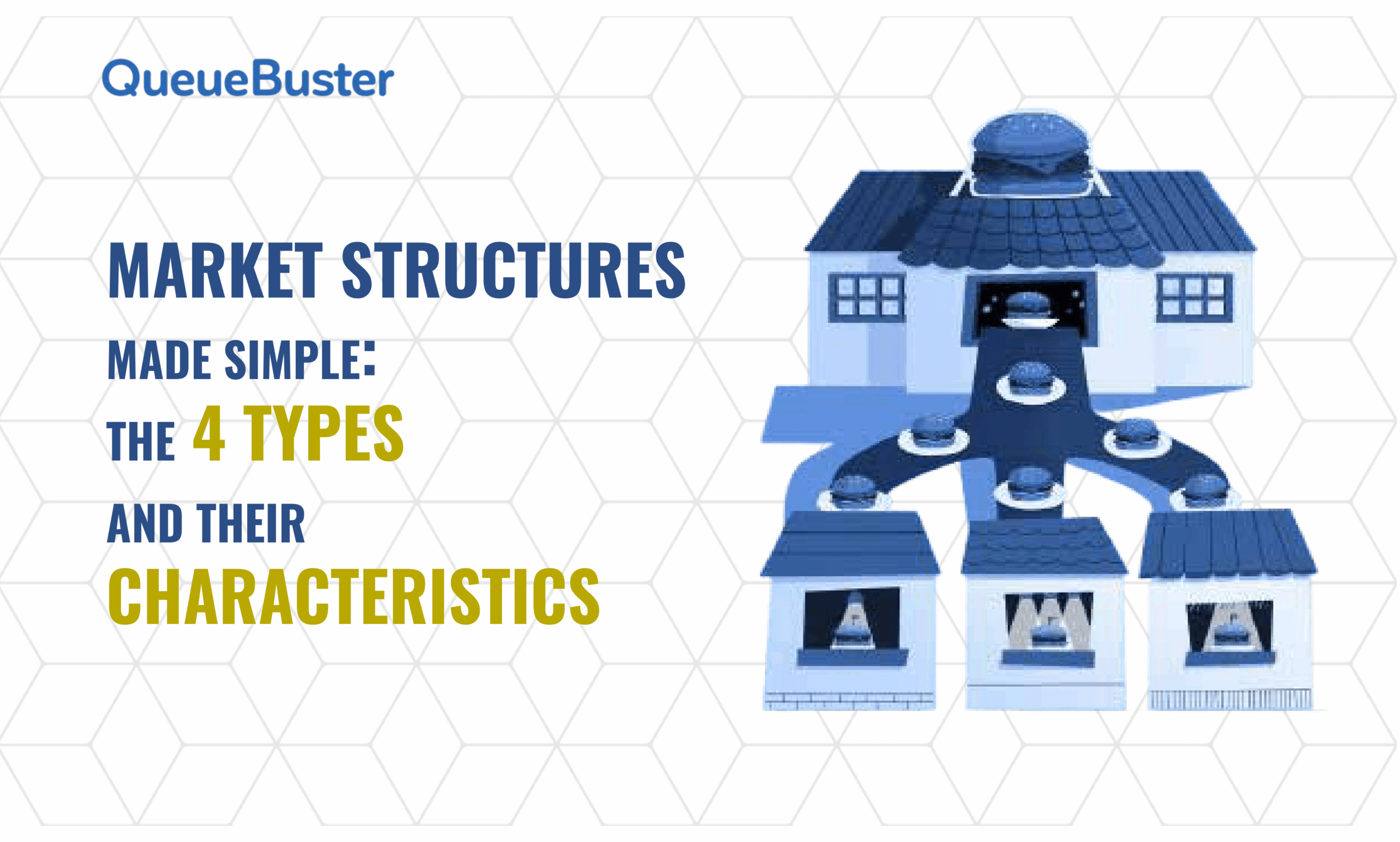
Market Structures Made Simple: The 4 Types and Their Characteristics
Market Structures Made Simple: The 4 Types and Their Characteristics

By Charu Gupta Published: July 29th, 2025
If you’ve ever wondered why some industries have hundreds of competitors while others are dominated by a handful of players, the answer lies in market structures. Understanding market structures isn’t just for economists, it’s crucial for entrepreneurs, investors, and business owners to make smarter business decisions.
And if you are a business owner, knowing your market structure also helps you decide how to optimize your operations with the right tools, like a POS billing software that ensures faster billing and smooth inventory management.
In this blog, we’ll break down the 4 main types of market structures, their key characteristics, and real-world examples to make this concept easy to grasp.
What Is a Market Structure?
A market structure refers to how a market is organized based on the number of competitors, the nature of products, and the level of control businesses have over pricing.
Market structure affects:
- Pricing power (Can you set your own price or follow the market?)
- Competition intensity (Are you battling 5 rivals or 5,000?)
- Profit margins (Do you earn comfortably or fight for every sale?)
The 4 Types of Market Structures
1. Perfect Competition
Key Characteristics:
- Many small sellers and buyers
- Identical products (no differentiation)
- Free entry and exit in the market
- No single player controls the price, prices are market-driven
Example:
- Agriculture: Farmers selling wheat, rice, or vegetables
Impact on Businesses:
- Very low profit margins
- Must compete on efficiency and cost
2. Monopolistic Competition
Key Characteristics:
- Many sellers, but products are differentiated
- Branding and marketing matter
- Some control over pricing because of unique features
Example:
- Restaurants, clothing brands, salons
Impact on Businesses:
- Businesses can charge more if they create a strong brand identity
- Heavy focus on advertising and customer loyalty
3. Oligopoly
Key Characteristics:
- Few large sellers dominate the market
- Products can be homogeneous (cement) or differentiated (smartphones)
- High barriers to entry, it’s hard for new players to enter
- Pricing decisions are interdependent (one company’s move affects others)
Example:
- Telecom industry, airline industry, automobile market
Impact on Businesses:
- Companies often compete with marketing or innovation rather than drastic price cuts
- Collaboration or price matching can sometimes happen
4. Monopoly
Key Characteristics:
- Only one seller in the market
- No close substitutes for the product
- Complete control over pricing
- High barriers to entry, new businesses can’t compete easily
Example:
- Indian Railways for long-distance train travel
- Local utility providers (water, electricity in some regions)
Impact on Businesses:
- High pricing power and profits
- But government regulations may control exploitation
Why Understanding Market Structures Matters for You
- Entrepreneurs: Know your market type to plan pricing and marketing strategies.
- Investors: Predict industry risks and profit potential.
- Students & Professionals: Gain a clear economic perspective of how markets function.
- And if you run a business in any market structure, the right POS billing solution ensures you stay organized, compliant, and competitive.
Final Thoughts
From perfect competition’s crowded battleground to monopoly’s one-kingdom rule, market structures define how businesses survive and thrive.
Understanding the type of market you operate in helps you:
- Set smarter pricing
- Build competitive advantages
- Predict industry trends better
If you’re exploring business strategy or economics, knowing these four market structures is your first step to seeing the market with clarity.
Popular Posts

Why Table Ordering and QR-Based Menus Are Booming in UAE Restaurants
The UAE restaurant industry is evolving faster than ever. From luxury fine […]

5 Effective Tips To Manage Billing For Multiple Customers
Managing billing for multiple customers, especially during peak business hours, can be […]